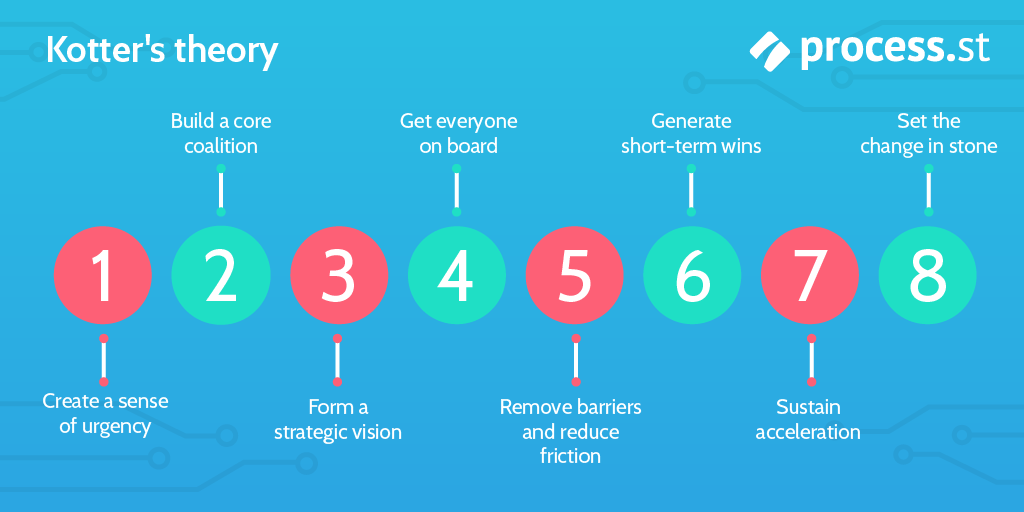Kotter's Change Management Model Process Checklist focuses less on the change itself and more on the people behind the change (adopting a top-down point of view).
Kotter's Change Management Model: An introduction
Developed in 1995 by John Kotter, the model works by creating a sense of urgency for change to create momentum behind it. Kotter's theory can be used to great effect in adapting a business to the current climate.
The theory works by:
- Creating a sense of urgency
- Building a core coalition
- Forming a strategy vision
- Getting everyone on board
- Removing barriers and reducing friction
- Generating short-term wins
- Sustaining acceleration
- Setting the changes in stone
What's good about it
The first stages of Kotter's theory set the foundation for success, creating a sense of urgency and convincing everyone why the change is necessary. This gives your team the drive to enact change, with enough people working on it for the change to become standard practice.
What's bad about it
Kotter's model is a top-down approach. The model doesn't take feedback onboard and therefore runs the risk of alienating employees by telling them what to do. This can be an issue for the company's working more collaboratively.
Having a back and forth between upper management and employees is vital for giving context from varying points of view and skill sets, and for having employees adapt to the change at all.
How to use this checklist
At the beginning of this checklist, you will be presented with a set of specialized questions given as form fields. You are required to populate each form field with your data.
The checklist is broken down into the 8 stages of Kotter's Change Management Model:
- Step 1 - Creating a sense of urgency
- Step 2 - Building a core coalition
- Step 3 - Forming a strategy vision
- Step 4 - Getting everyone on board
- Step 5 - Removing barriers and reducing friction
- Step 6 - Generating short-term wins
- Step 7 - Sustaining acceleration
- Step 8 - Setting the changes in stone
At the end of each stage, your supervisor/manager will review your work using Process Street's approvals feature. Other features used in this template include:
- Stop tasks - To ensure task order.
- Dynamic due dates - To make sure your initiative is reviewed on time.
- Role assignment - To delegate tasks within your team ensuring your supervisors are appropriately assigned to the review tasks.
- Approvals - Tasks can be accepted, rejected, and rejected with comments.










